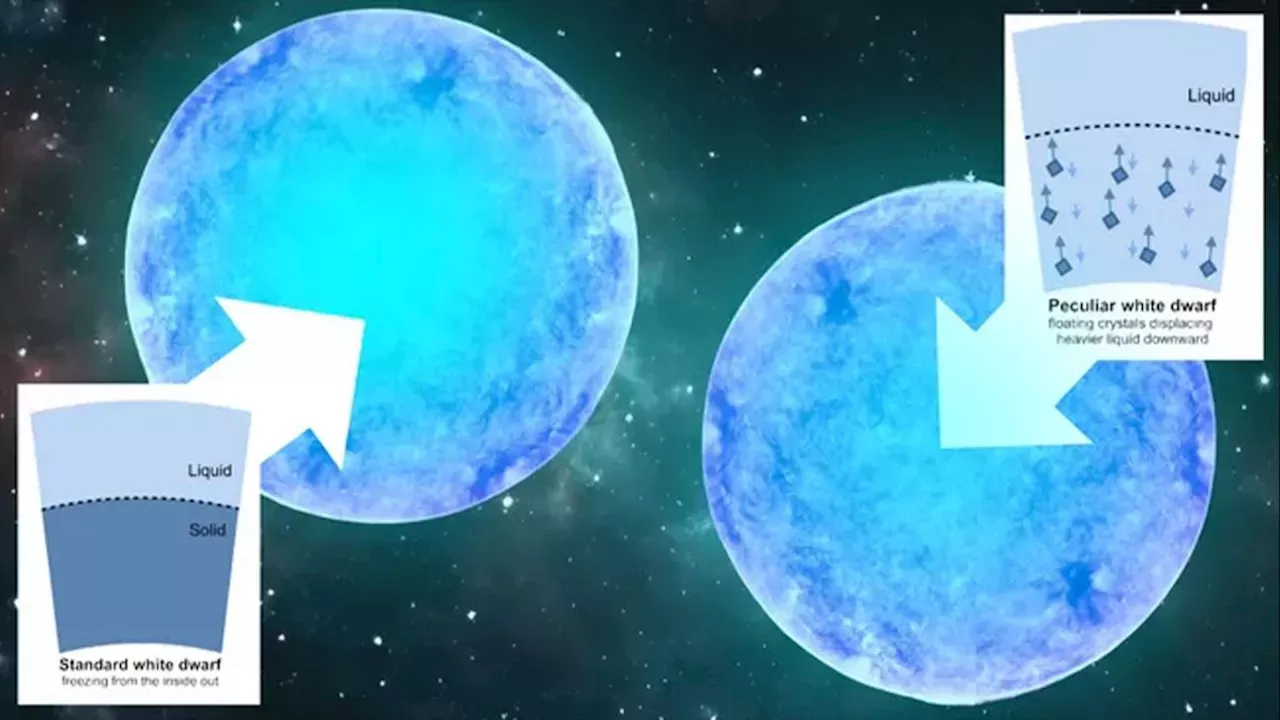Robert Lea is a science journalist in the U.K. who specializes in science, space, physics, astronomy, astrophysics, cosmology, quantum mechanics and technology. Rob's articles have been published in Physics World, New Scientist, Astronomy Magazine, All About Space and ZME Science.
White dwarfs are the stars that will be left behind when stars like the sun"die," smoldering away in space as cooling stellar embers.
The fountain of stellar youthWhite dwarfs are born when stars that possess around the same mass as the sun exhaust the fuel supply necessary for nuclear fusion at their cores. This supply is made up of the universe's lightest element: Hydrogen. The end of fusion, aka the conversion of hydrogen to helium, in the stellar core also cuts off the energy that has pushed outwards and protected the star from collapsing under its own gravity for often billions of years.
For the sun, this transformation will begin in around 5 billion years; the red giant phase of our star will see it swell out to the radius of Mars. During this time, the sun will end up swallowing the inner planets, including Earth. 97% of the stars in the Milky Way will undergo the same basic process to become white dwarfs.
Bédard and colleagues think that, for some white dwarfs, the dense plasma within doesn't freeze from inside to outside. They have discovered a celestial fountain of youth, so to speak, which lurks beneath some of these stars' shells. "This explanation matches all the observational properties of the unusual white dwarf population," Bédard said in a statement."This is the first time this transport mechanism has been observed in any type of star, which is exciting: it’s not every day we uncover a whole new astrophysical phenomenon!"
Currently, when scientists look at white dwarfs, they assume the cooler one is, the more ancient it is. The cooling delay experienced by these peculiar white dwarfs, however, could mean they have temperatures that make them appear much younger than they actually are.—'This is a journey, not a destination': Stunning map of the Milky Way's center exposes new mysteries about our galaxy
Indonesia Berita Terbaru, Indonesia Berita utama
Similar News:Anda juga dapat membaca berita serupa dengan ini yang kami kumpulkan dari sumber berita lain.
 Scientists create 5 new isotopes to learn how neutron star collisions forge goldRobert Lea is a science journalist in the U.K. whose articles have been published in Physics World, New Scientist, Astronomy Magazine, All About Space, Newsweek and ZME Science. He also writes about science communication for Elsevier and the European Journal of Physics. Rob holds a bachelor of science degree in physics and astronomy from the U.K.
Scientists create 5 new isotopes to learn how neutron star collisions forge goldRobert Lea is a science journalist in the U.K. whose articles have been published in Physics World, New Scientist, Astronomy Magazine, All About Space, Newsweek and ZME Science. He also writes about science communication for Elsevier and the European Journal of Physics. Rob holds a bachelor of science degree in physics and astronomy from the U.K.
Baca lebih lajut »
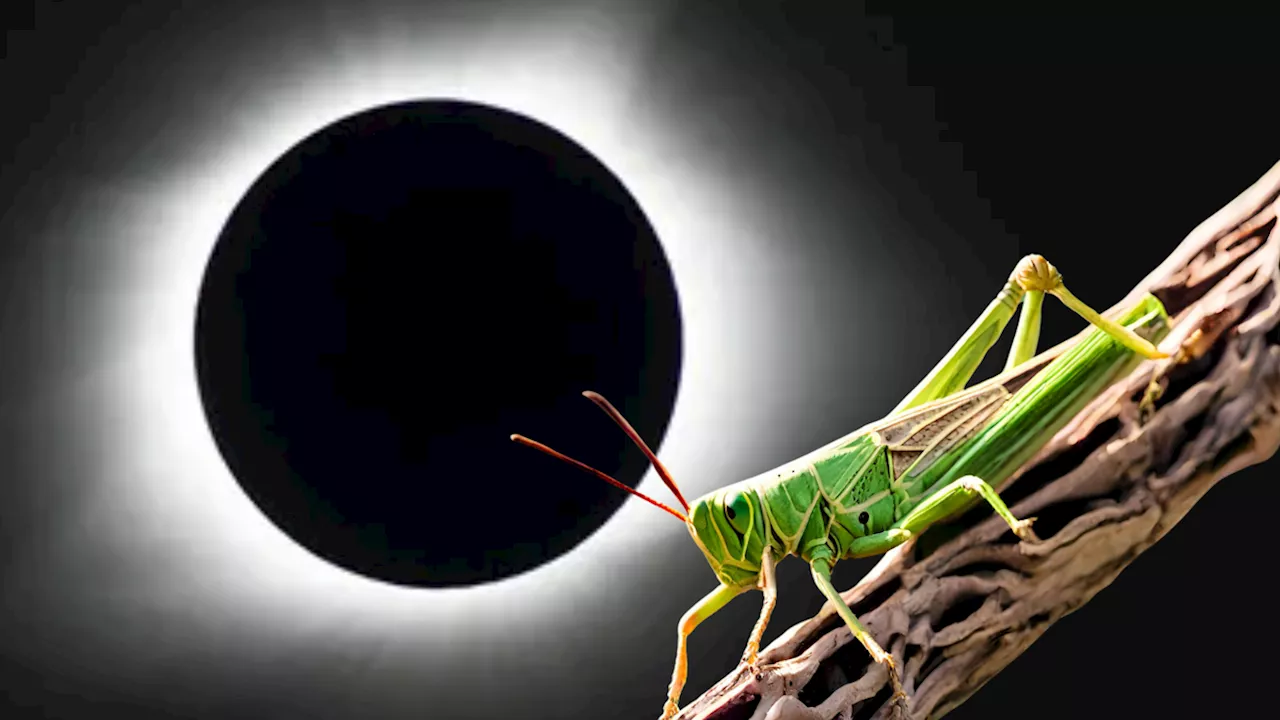 NASA Eclipse Soundscapes Project will record how 2024's total solar eclipse impacts natureRobert Lea is a science journalist in the U.K. whose articles have been published in Physics World, New Scientist, Astronomy Magazine, All About Space, Newsweek and ZME Science. He also writes about science communication for Elsevier and the European Journal of Physics. Rob holds a bachelor of science degree in physics and astronomy from the U.K.
NASA Eclipse Soundscapes Project will record how 2024's total solar eclipse impacts natureRobert Lea is a science journalist in the U.K. whose articles have been published in Physics World, New Scientist, Astronomy Magazine, All About Space, Newsweek and ZME Science. He also writes about science communication for Elsevier and the European Journal of Physics. Rob holds a bachelor of science degree in physics and astronomy from the U.K.
Baca lebih lajut »
 Heaviest pair of black holes ever seen weighs 28 billion times more than the sunRobert Lea is a science journalist in the U.K. whose articles have been published in Physics World, New Scientist, Astronomy Magazine, All About Space, Newsweek and ZME Science. He also writes about science communication for Elsevier and the European Journal of Physics. Rob holds a bachelor of science degree in physics and astronomy from the U.K.
Heaviest pair of black holes ever seen weighs 28 billion times more than the sunRobert Lea is a science journalist in the U.K. whose articles have been published in Physics World, New Scientist, Astronomy Magazine, All About Space, Newsweek and ZME Science. He also writes about science communication for Elsevier and the European Journal of Physics. Rob holds a bachelor of science degree in physics and astronomy from the U.K.
Baca lebih lajut »
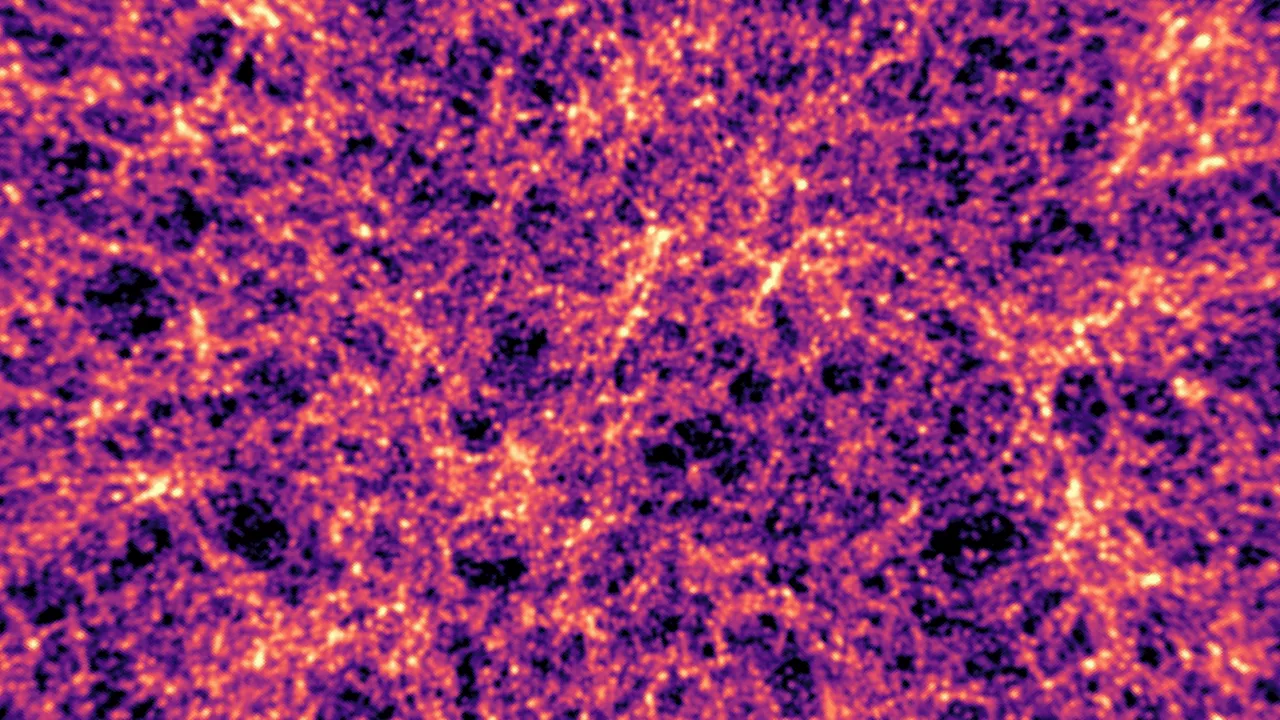 Dark energy remains a mystery. Maybe AI can help crack the codeRobert Lea is a science journalist in the U.K. whose articles have been published in Physics World, New Scientist, Astronomy Magazine, All About Space, Newsweek and ZME Science. He also writes about science communication for Elsevier and the European Journal of Physics. Rob holds a bachelor of science degree in physics and astronomy from the U.K.
Dark energy remains a mystery. Maybe AI can help crack the codeRobert Lea is a science journalist in the U.K. whose articles have been published in Physics World, New Scientist, Astronomy Magazine, All About Space, Newsweek and ZME Science. He also writes about science communication for Elsevier and the European Journal of Physics. Rob holds a bachelor of science degree in physics and astronomy from the U.K.
Baca lebih lajut »
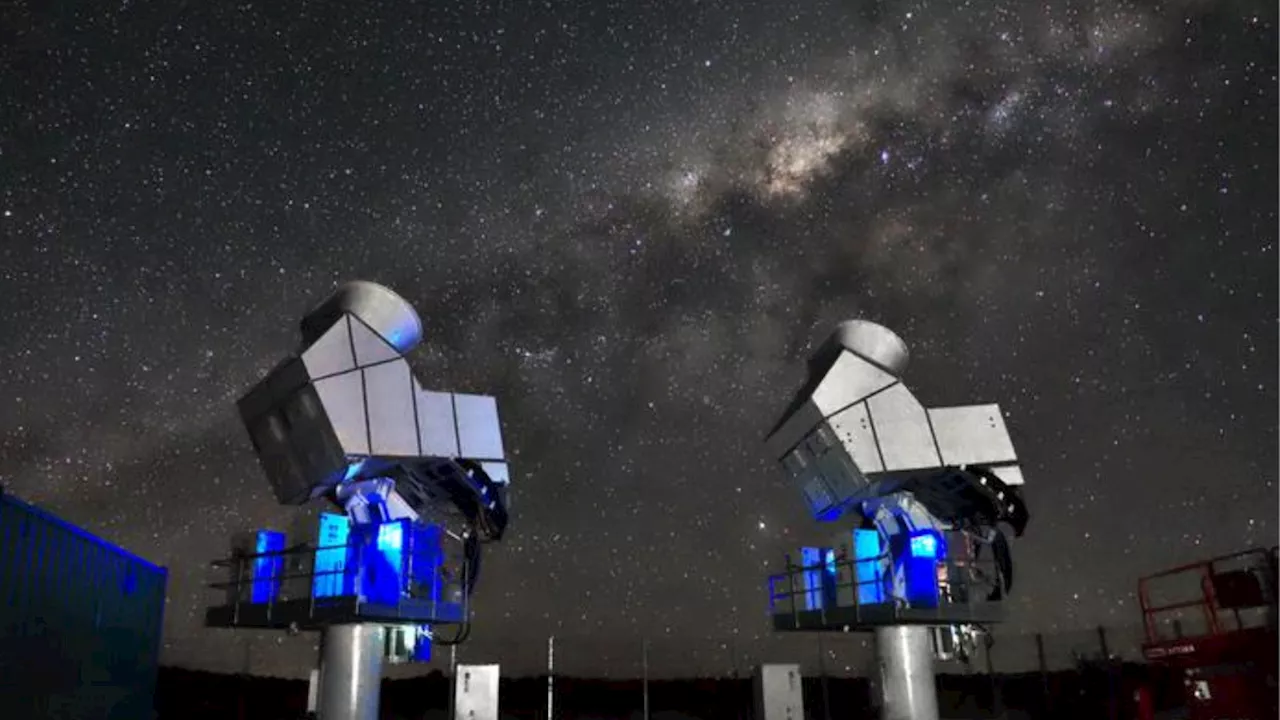 'Wiggles' of energy waves over Earth could hold the universe's historyRobert Lea is a science journalist in the U.K. whose articles have been published in Physics World, New Scientist, Astronomy Magazine, All About Space, Newsweek and ZME Science. He also writes about science communication for Elsevier and the European Journal of Physics. Rob holds a bachelor of science degree in physics and astronomy from the U.K.
'Wiggles' of energy waves over Earth could hold the universe's historyRobert Lea is a science journalist in the U.K. whose articles have been published in Physics World, New Scientist, Astronomy Magazine, All About Space, Newsweek and ZME Science. He also writes about science communication for Elsevier and the European Journal of Physics. Rob holds a bachelor of science degree in physics and astronomy from the U.K.
Baca lebih lajut »
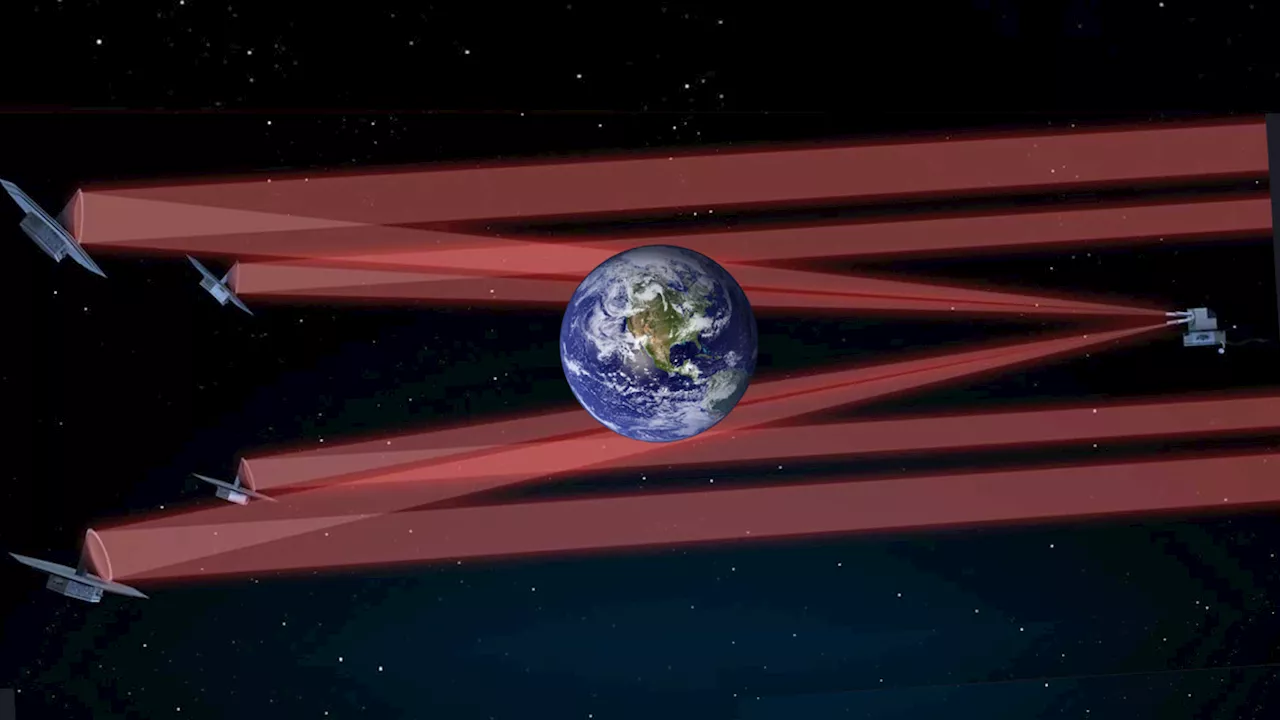 If aliens had our life-hunting equipment, could they find us?Robert Lea is a science journalist in the U.K. whose articles have been published in Physics World, New Scientist, Astronomy Magazine, All About Space, Newsweek and ZME Science. He also writes about science communication for Elsevier and the European Journal of Physics. Rob holds a bachelor of science degree in physics and astronomy from the U.K.
If aliens had our life-hunting equipment, could they find us?Robert Lea is a science journalist in the U.K. whose articles have been published in Physics World, New Scientist, Astronomy Magazine, All About Space, Newsweek and ZME Science. He also writes about science communication for Elsevier and the European Journal of Physics. Rob holds a bachelor of science degree in physics and astronomy from the U.K.
Baca lebih lajut »
